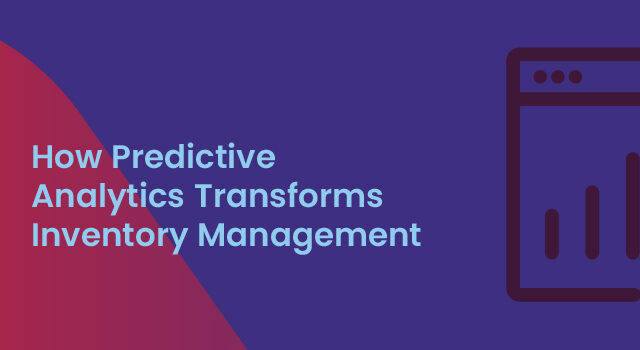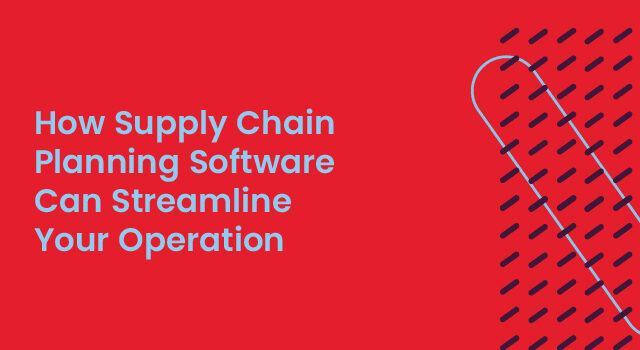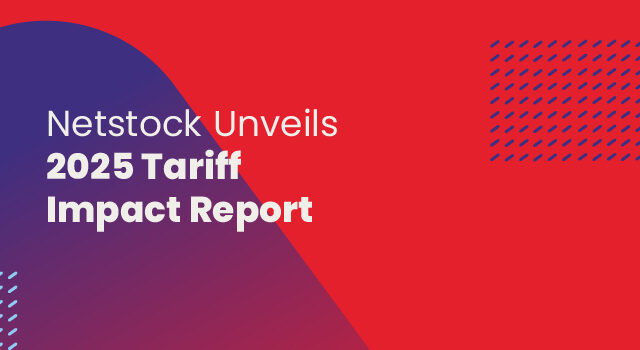Imagine this: You’re a supply chain manager at a mid-sized retail company in December. Demand for your top-selling product has unexpectedly skyrocketed. Your warehouses are running low, suppliers are overwhelmed, and customer complaints about delays are mounting. Meanwhile, pallets of last season’s overstocked items gather dust in your warehouse corners.
This struggle between too much and too little inventory plagues businesses across industries. But what if you could anticipate demand shifts before they happen? What if your inventory management system could tell you exactly what to order, when, and where it should go? That’s the power of predictive inventory management.
Table of contents
- The evolution of inventory management: from reactive to predictive
- What is predictive inventory management?
- How predictive analytics transforms your inventory strategy
- Key components of predictive inventory management
- Challenges in implementing predictive inventory management
- Inside a successful implementation: The Tradeware story
- Building your predictive inventory management framework
- The future of inventory management is predictive
- Ready to transform your inventory management?
The evolution of inventory management: from reactive to predictive
Traditional inventory management relies heavily on historical data and gut feelings. Managers often make decisions based on last year’s events, with some adjustments for known factors. This reactive approach leads to the all-too-common cycle of stock-outs and overstocks, which tie up working capital and frustrate customers.
Predictive inventory management breaks this cycle by applying advanced analytics to identify potential risks before they materialize. By analyzing historical sales alongside market trends, customer behavior, seasonal patterns, and external factors like economic conditions, predictive systems give you the foresight to make smarter inventory decisions.
What is predictive inventory management?
Predictive Inventory Management uses predictive analytics to identify risks that may result in shortages. Management can use these insights to take mitigating actions and lessen the impact of supply chain issues. The information facilitates stock optimization to avert shortages or excess inventory.
Predictive inventory management involves historical sales and market trend analysis. Add to this customer behavior, seasonal trends, and external factor analysis. External factors may include economic conditions and supplier performance.
The result is improved supply chain efficiency. Expect reduced carrying costs and products in the right places when needed. Your business should gain a competitive edge with fewer lost sales, improved customer service, and higher profits.
How predictive analytics transforms your inventory strategy
When implemented effectively, predictive analytics delivers tangible benefits across your entire supply chain operation:
Accurate demand forecasting
Imagine receiving forecasts that accurately predict future product demand. Predictive analytics uses sales data to identify changes in demand and seasonal sales. It includes external influences like economic trends and competitor actions. The AI learns from actual sales using machine learning algorithms.
With more accurate forecasting, you can better anticipate customer needs and plan accordingly. This forward-looking approach helps prevent both stockouts’ frustration and excess inventory’s financial burden.
Optimized inventories
When you have confidence in the forecast accuracy, you can take bold actions to reduce excess stocks. You know that the stockout risk is minimal. This way, you can ensure you have the right products in the right place at the right time. Lower stocks reduce your holding costs and the risk of obsolescence and waste.
Inventory optimization isn’t just about cutting costs—it’s about strategically allocating your inventory investment across your product range to maximize customer service and financial performance.
Enhanced supply chain efficiency
Predictive analytics uses supplier and logistics performance metrics, weather patterns, and geopolitics to predict supply risks. These may include raw material shortages, shipping delays, and unexpected sales increases.
With this information, you can take action to prevent delays. For example, you could obtain materials from other suppliers or change shipping methods. The forecasted supply risks allow you to streamline operations and reduce lead times.
Key components of predictive inventory management
Predictive inventory management has three main components:
- Data collection: The system requires a reliable and accurate dataset to forecast. This includes historical sales data, market trends, and economic indicators. Incomplete, outdated, or inconsistent data can lead to inaccurate predictions.
- Analytical models: Predictive inventory management uses statistical algorithms and machine learning to analyze vast datasets. AI enhances analytic models by automating data processing and enabling dynamic forecasts, which respond quickly to demand changes.
- Integration with Inventory Management Systems: For predictive analytics to work effectively, it must fully integrate with the inventory management system. With integrated software, you can track inventory in real-time, automate replenishment, and improve collaboration across the supply chain.
Challenges in implementing predictive inventory management
You will face challenges when you implement predictive inventory management. These include:
- Data quality and availability: Accurate and complete data form the basis of accurate forecasting. However, you may struggle with incomplete or inconsistent data. Information may be scattered across different departments, making it challenging to create a unified view.
- Complexity of analytical techniques: Advanced forecasting requires considerable computing power and sophisticated algorithms. These techniques can be challenging to understand and implement without user-friendly tools, creating a barrier for many businesses.
- Demand volatility: Market changes and unexpected events can challenge even the most sophisticated forecasting models. Adapting to these shifts requires systems that quickly incorporate new data and adjust predictions accordingly.
Inside a successful implementation: The Tradeware story
Tradeware, Australia’s leading wholesale hardware supplier, faced challenges managing its extensive product range in six strategically placed warehouses. As the business grew rapidly, the company could no longer rely on spreadsheets for inventory management. Recognizing the need for a scalable solution, they installed Netstock, a predictive inventory management solution.
The results were remarkable:
- Improved forecasting and fill rates: Tradeware improved its accuracy and optimized inventory levels and fill rates.
- Streamlined processes: Netstock’s user-friendly interface enabled it to manage safety efficiently, lead time, and reorder stock.
- Data-driven decision making: Netstock’s Pivot Forecasting® allowed Tradeware to incorporate Google Trends data, creating accurate seasonality curves even for new products.
Tradeware improved supplier relationships as they shared 12-month projected order forecasts. This change optimized their inventory so they had more time to focus on strategic improvements.
Netstock’s comprehensive training and onboarding process equipped the team to excel at demand planning.
Tradeware revolutionized inventory management by replacing time-consuming spreadsheets with Netstock’s purpose-built solution. With enhanced forecasting, streamlined processes, and improved fill rates, Tradeware gained complete visibility into its inventory across six national warehouses.
Watch how Netstock optimizes inventory management
Building your predictive inventory management framework
Implementing predictive analytics in your inventory management doesn’t have to be overwhelming.
Here’s a practical roadmap to get started:
1. Assess your current inventory processes
You need a baseline from which to start. Evaluate your current inventory management practices to identify stockout frequency and surplus stocks. Review supplier performance, including lead times and delivery reliability. Use the information to identify areas where predictive analytics can improve performance.
This assessment provides a foundation for measuring improvement and helps pinpoint where predictive analytics can deliver the greatest value for your business situation.
2. Invest in the right technology
Management should consider investing in AI-powered inventory management software with predictive analytics—the software must-have features such as automated demand forecasting, real-time inventory tracking, and data-driven supplier assessments.
Look for technology that integrates with your existing systems and offers intuitive interfaces your team can quickly adapt. Netstock is the ideal solution for small- to medium-sized businesses looking for sophisticated analytics without enterprise-level complexity.
3. Train your team
Your staff needs training to use new predictive analytics tools and interpret data insights effectively. The training should emphasize the role of AI in enhancing, rather than replacing, human decision-making.
Investing in comprehensive training ensures your team can maximize the value of your new system. Regular refresher sessions help keep everyone up to date as the technology evolves and your business needs change.
Learn more about Netstock’s Learning Academy
The future of inventory management is predictive
As supply chains grow more complex and customer expectations more demanding, reactive inventory management isn’t sustainable. Businesses that embrace predictive analytics gain a significant competitive advantage through better inventory optimization, improved customer satisfaction, and more strategic supplier relationships.
Modern businesses are fast discovering the benefits of predictive analytics in inventory management. This powerful tool can achieve accurate demand forecasts, improve supply chain performance, lower carrying costs, and improve sales and customer service.
Despite the challenges of implementing the software, the benefits are well worth the effort. Choose fully integrated AI-driven predictive inventory management software and train your staff to use it. Now, you can manage your inventories proactively rather than chasing shortages.
Ready to transform your inventory management?
Stop reacting to inventory problems and start preventing them. Explore inventory and demand planning olutions like Netstock to discover how predictive analytics can streamline inventory processes for better business outcomes.
Schedule a demo today to see how Netstock’s advanced tools can help your business achieve the same transformative results that Tradeware experienced.
FAQ
How does predictive inventory management differ from traditional approaches?
Traditional inventory management primarily looks backward at historical data, while predictive approaches combine historical information with multiple data sources to forecast future needs more accurately. This forward-looking perspective helps businesses stay ahead of supply chain challenges rather than merely reacting to them.
What types of businesses benefit most from predictive inventory management?
Any business that manages inventory can benefit, but companies with complex supply chains, seasonal demand patterns, or large product catalogs typically see the most significant improvements. Both manufacturers and distributors across industries have successfully implemented predictive analytics to optimize inventory management.
How does predictive inventory management handle new products with limited historical data?
Modern systems use various techniques to forecast new products, including analyzing similar existing products, incorporating market trends, and adjusting forecasts as initial sales data becomes available. This adaptive approach allows for increasingly accurate predictions as more information is collected.






